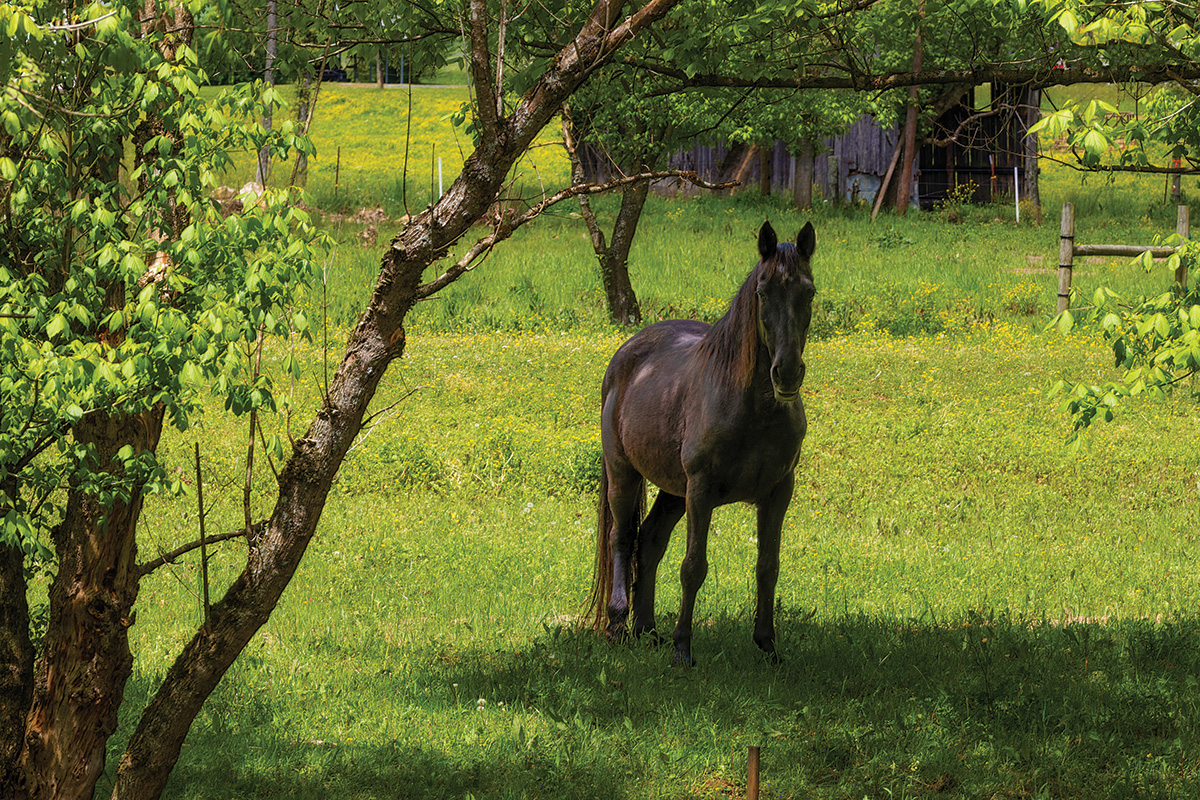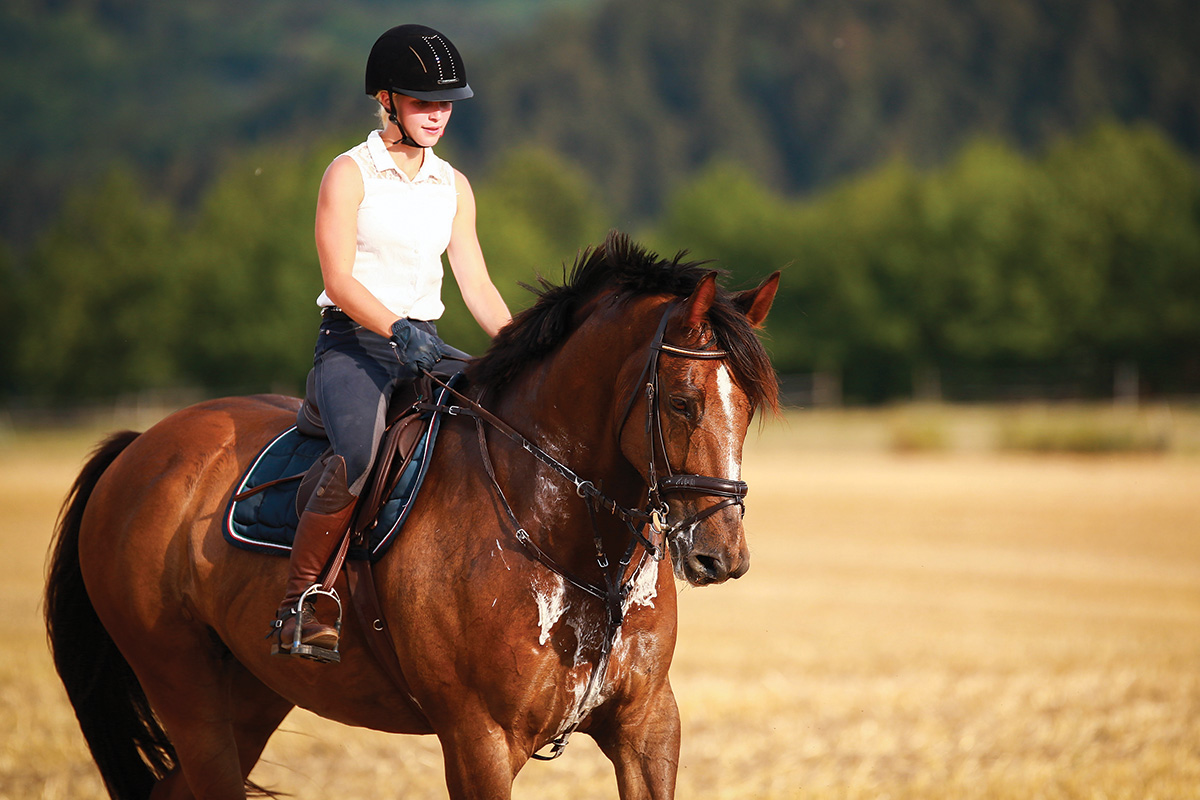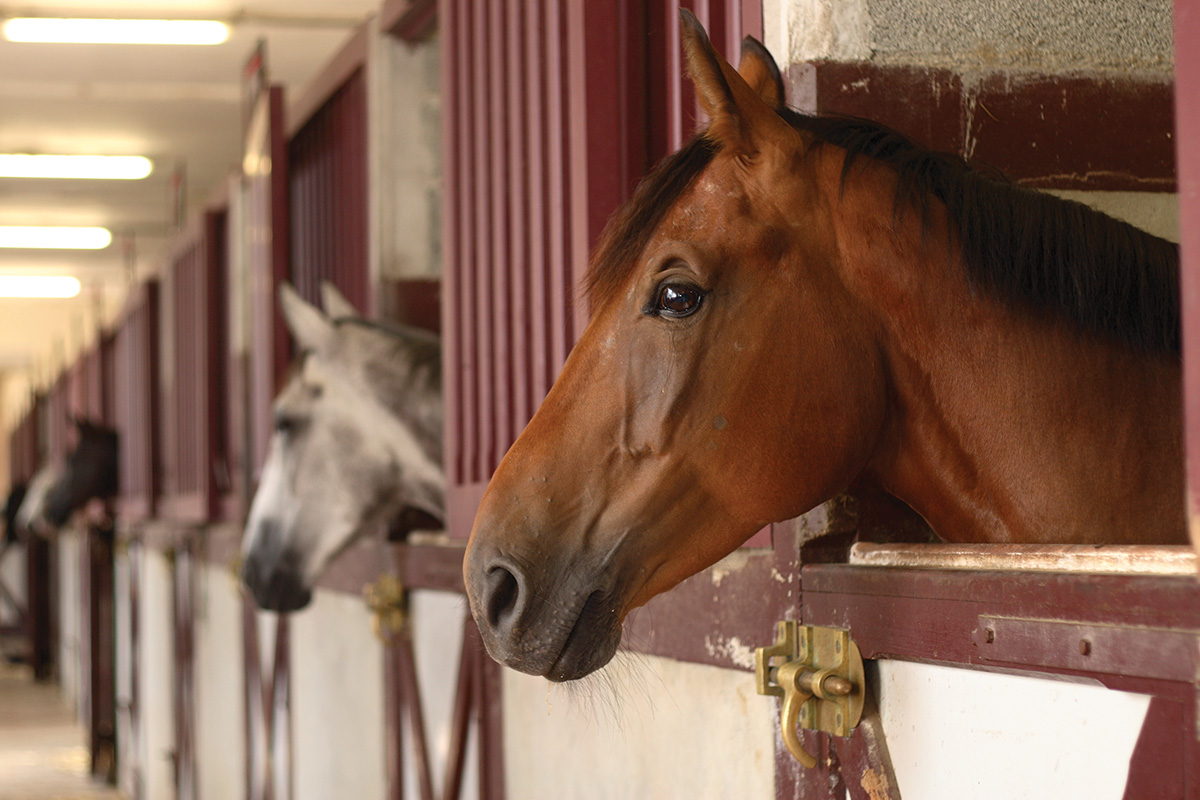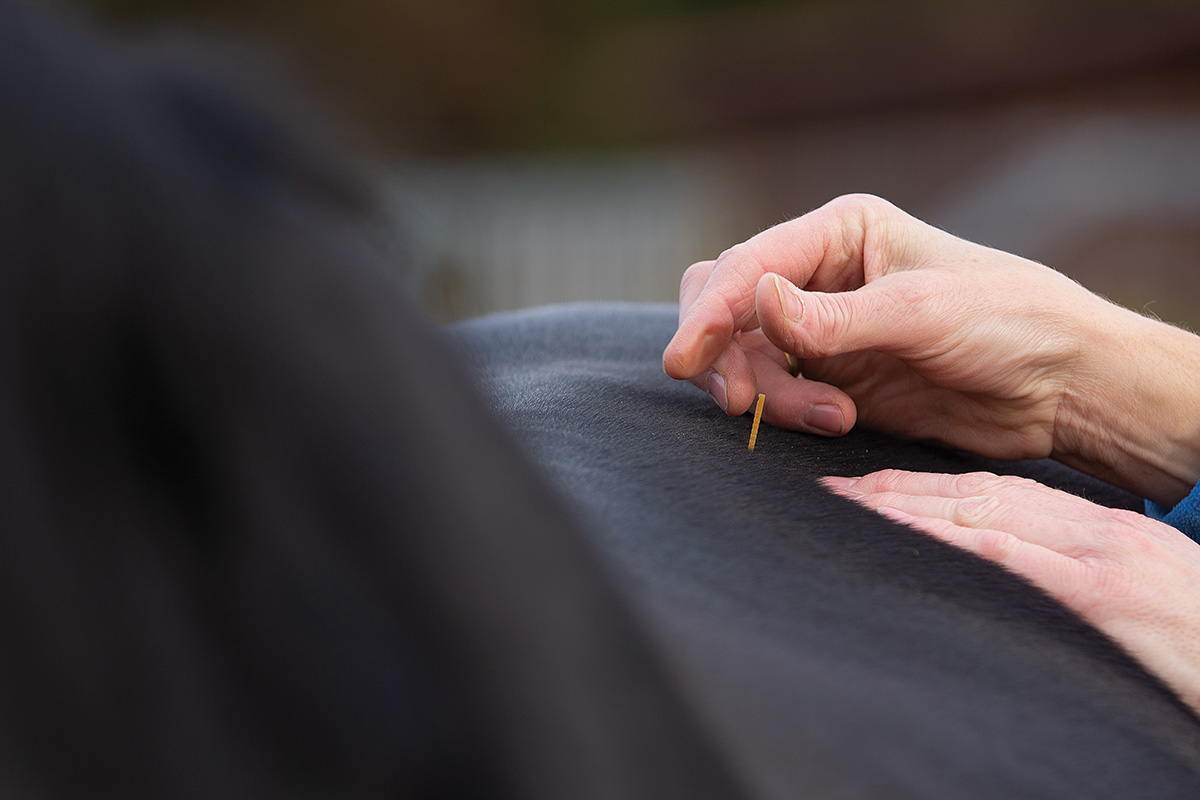Anhidrosis is a fairly common problem for horses in hot and humid regions, but there is hope for keeping them in work, even without relocating.

Signs of Anhidrosis in Horses
Though horses with anhidrosis are often called “non-sweaters,” this term is misleading: The majority of horses with the condition suffer from incomplete or partial anhidrosis, meaning they don’t sweat as much as they should, or they sweat in abnormal patterns—not that they don’t sweat at all.
This condition is most often diagnosed in performance horses that are in work, but it can affect any horse, including those that are retired and not ridden. Studies have shown that darker-colored horses are often more affected by anhidrosis than their lighter-colored counterparts1.
This condition doesn’t appear on most horse owners’ radar until their horse has a fairly serious health episode that is linked back to environmental conditions. As temperatures rise, horses suffering from anhidrosis may show a decrease in exercise tolerance and a higher-than-expected respiratory rate for the amount of exercise that was undertaken.
These horses may also have dull, dry haircoats or be seen leaving the herd to stand in the shade alone. Lack of sweating is the most serious manifestation of the disease and often occurs after other clues are present.

As with many equine diseases, it’s better to catch the condition early, when intervention has the greatest chance for impact. Martha Rodgers, VMD, owner of Shephard Hill Equine in Lexington, Ky., recommends learning your horse’s sweat patterns in different temperatures, especially if he’s located in an area with high heat and humidity.
“With a noticeable reduction in sweat capability or pattern, diagnosing the condition earlier has typically made it easier to stimulate increased sweating with the available treatments,” Rodgers says. She notes that if the horse has a complete inability to sweat, the treatment is often less effective overall or can take much longer to see any effects.

What is the Cause of Anhidrosis in Horses?
The cause of anhidrosis isn’t clear, but it’s believed to be linked to overstimulation of the horse’s sweat glands by stress hormones, often in the heat of the summer. Anhidrosis can be brought on by a plethora of triggers, including electrolyte imbalance and overtraining2.
Antihistamines and macrolide antibiotic (broad-spectrum antibiotics used against many gram-positive bacteria) use can lead to temporary anhidrosis, but the condition typically abates once the drug ceases to be administered.

The form of anhidrosis most horses experience is called chronic idiopathic anhidrosis (CIA). CIA is frustrating for horse owners as it is the most difficult form to control. A treatment for complete resolution is not yet available, but steps can be taken to make the horse more comfortable.
Researchers at the University of Florida Institute of Food and Agricultural Sciences (UF/IFAS) have identified a genomic marker that contributes to CIA. The scientists discovered a genetic marker pointing to a defective potassium transporter channel3. The research team hypothesizes that sweat glands trying to use these damaged channels eventually lose their ability to sweat.
Diagnosis and Management of Anhidrosis
A horse is often diagnosed with anhidrosis by clinical observation and examination, including a medical history. However, a “sweat test” can be done to quantitatively assess how well the horse can sweat.
A sweat test involves a series of intradermal terbutaline injections, which should increasingly stimulate the horse’s sweat glands as medication concentration rises. The vet will likely also run a blood panel that includes an electrolyte analysis; this may assist in the formation of a treatment plan. A skin biopsy can also be performed, but it’s rarely necessary to look at the skin microscopically to make a definitive diagnosis.
Once a horse is diagnosed with anhidrosis, he must be given supportive care to assist with thermoregulation. Management changes are often necessary to ensure the horse’s safety, as well. This doesn’t often mean moving your horse to a cooler climate, although in extreme cases, relocation may be considered.

Simple management modifications can include limiting sun exposure and minimizing turnout during the hottest time of day. Reducing training and showing schedules is often necessary, but making sure the horse isn’t ridden during the hottest part of the day may suffice and allow the horse to remain in work.
Supplements and Acupuncture
Many owners find themselves eager to try anything that could help their anhidrotic horse. You may have heard about adding a daily dark beer to his grain ration; there is no harm in this, though it hasn’t been shown to do much good.
“There are a few supplements that have shown some anecdotal success over the first few days [of use], so response to treatment can be assessed quickly,” Rodgers says. “There are other [supplements] that are typically given over a month or more, and response to treatment with those products may be harder to evaluate, as environmental conditions may change over that length of time.”
Rodgers notes that a 2010 study of Xiang Ru San, a Chinese herbal medicine, used in conjunction with acupuncture showed statistically significant benefit to all 18 horses with anhidrosis that were studied4. However, this study relied on owner reporting and didn’t have a control group or double-blind methodology.
A double-blind study of 44 horses conducted in 2012 by the University of Florida also found significantly improved sweat-test results from acupuncture and herbal medicine, and did have a control group. However, these results returned to baseline four weeks after stopping treatment5.

“Consistent use of Xiang Ru San while the horse still has some ability to sweat, albeit reduced, has been helpful in my practice,” says Rodgers. “I’ve had the most beneficial, longer-lasting results with consistent management changes and Neuro-Vet paste use soon after diagnosis.”
Unfortunately, it’s important to note that no anhidrosis treatment is one and done.
“Most of the treatments have to be ongoing until consistent increases in sweating ability are seen [which can take a month or more], or until the combined ambient heat/humidity index has declined,” says Rodgers.
Once a horse has had anhidrosis, he should be monitored whenever environmental conditions might trigger it.
Managing anhidrosis can be difficult and a drain on an owner in terms of time and finances. However, with diligent care and a dedicated veterinarian, a horse suffering from anhidrosis can often lead a safe and healthy life—no relocation necessary.
A Firsthand Experience with AnhidrosisChristine Siegel lives in Kentucky, where summers are notoriously hot and humid. The owner of multiple horses, she battles anhidrosis with one: Market Light, an off-track Thoroughbred. Now 10, Siegel has had “Marley” for the last eight years; the duo have competed to Second Level dressage and in USDF Young Horse competitions, though the mare’s current diagnosis has halted competitive aspirations. Siegel can pinpoint the last time Marley was able to sweat regularly: at a dressage show in the spring of her 5-year-old year. On the last day of competition, she got unusually sweaty and dull, Siegel recalls. “We could tell that something wasn’t quite right,” she says. “That was the last day she was able to sweat regularly. We’ve tried everything [to make her more comfortable in summer]. One AC [supplement], Guinness beer, the Equiwinner patch, Equine Mega Sweat formula with Oxy Cleanse powder, chiropractic, acupuncture, massage, Chinese medicine … I used a few other sweat supplements, but these did the best.” Overwhelmed yet? So was Siegel. “Everything has done something, but nothing has done everything,” she says. “Anhidrosis is a lifelong journey that can be managed. Educate yourself on how to care for your horse’s specific needs so you can enjoy each other for years to come. If your horse is a seasonal [sweater], don’t wait until symptoms begin—get in front of it.” This proactive approach to her horse’s anhidrosis has served Marley well, since she begins to sweat in the summer, then shuts down as temperatures rise. Other management changes Siegel has made include setting up special pens in shady areas of the farm for Marley to graze as well as hosing her every few hours if temperatures are especially brutal. When she’s in a stall, Marley stands under fans. When she can be ridden, Siegel makes sure that it’s early or late in the day. “Always have a thermometer, isopropyl rubbing alcohol in a spray bottle for cooling, and lots of love and patience,” she says. “They really do so much for us with little complaint.” |
Sources
1. Hagyard Equine Medical Institute
2. University of Florida IFAS Extension
3. University of Florida IFAS Extension
4. American Journal of Traditional Chinese Veterinary Medicine
5. University of Florida
This article about anhidrosis in horses appeared in the June 2022 issue of Horse Illustrated magazine. Click here to subscribe!





